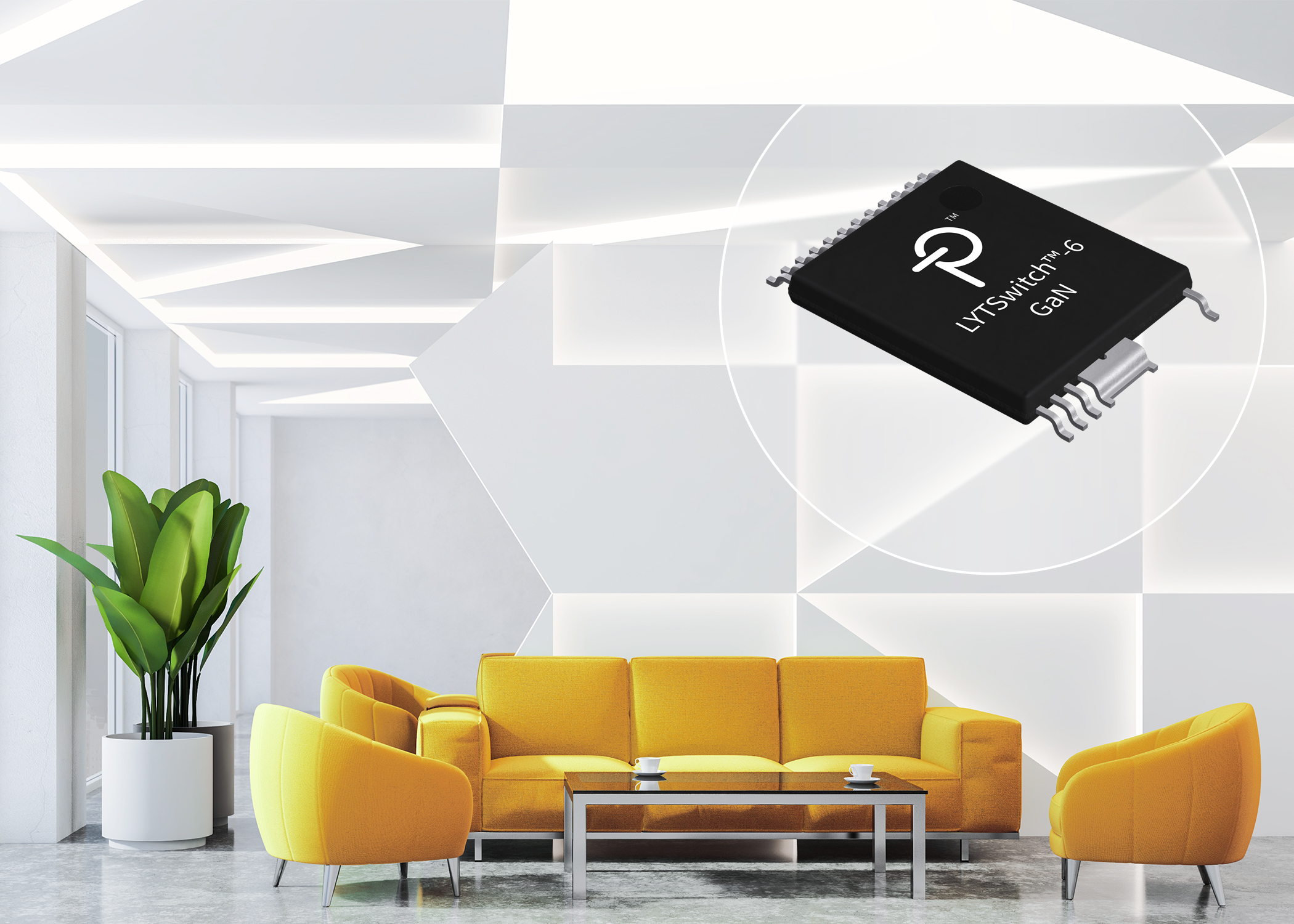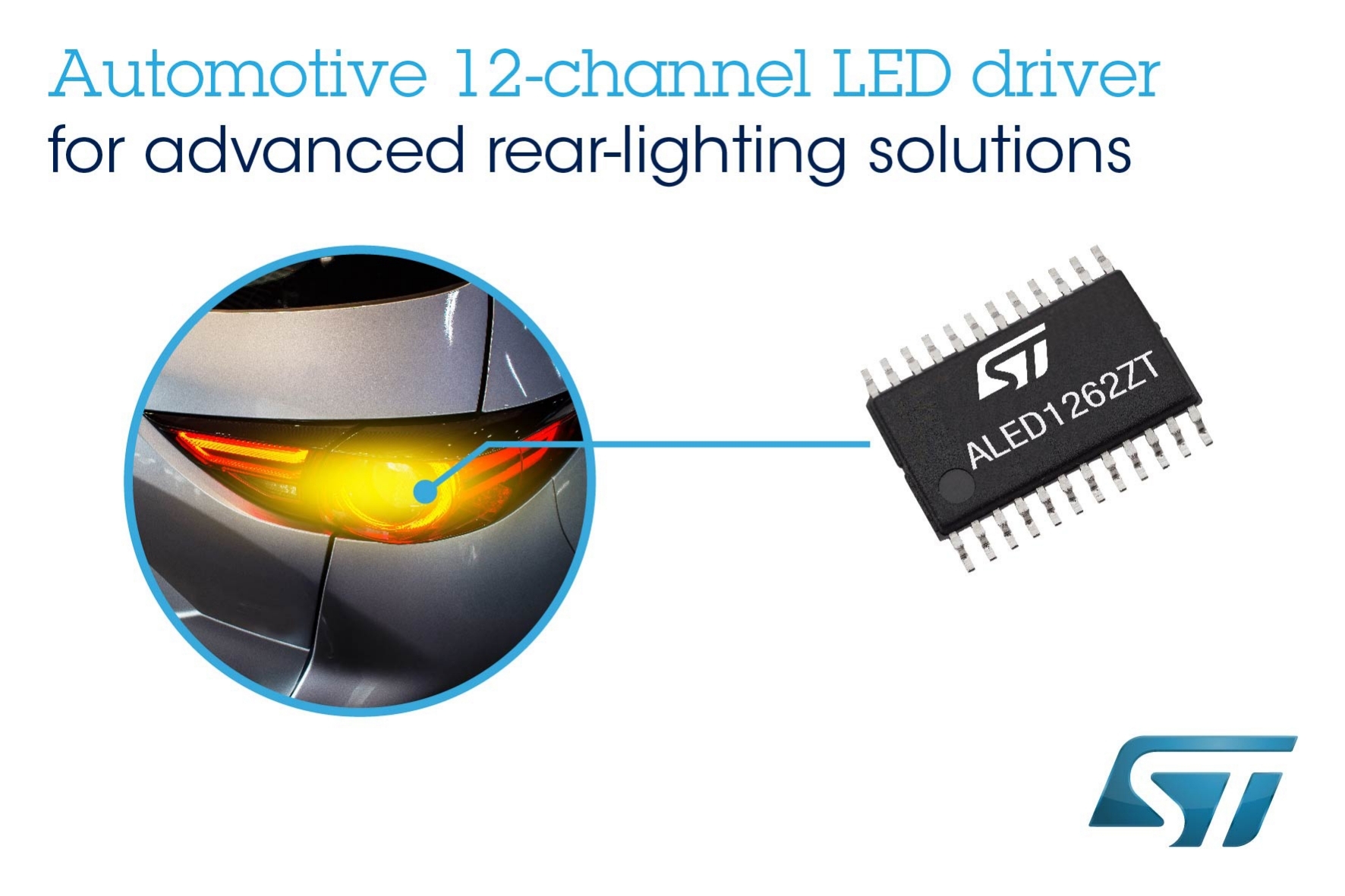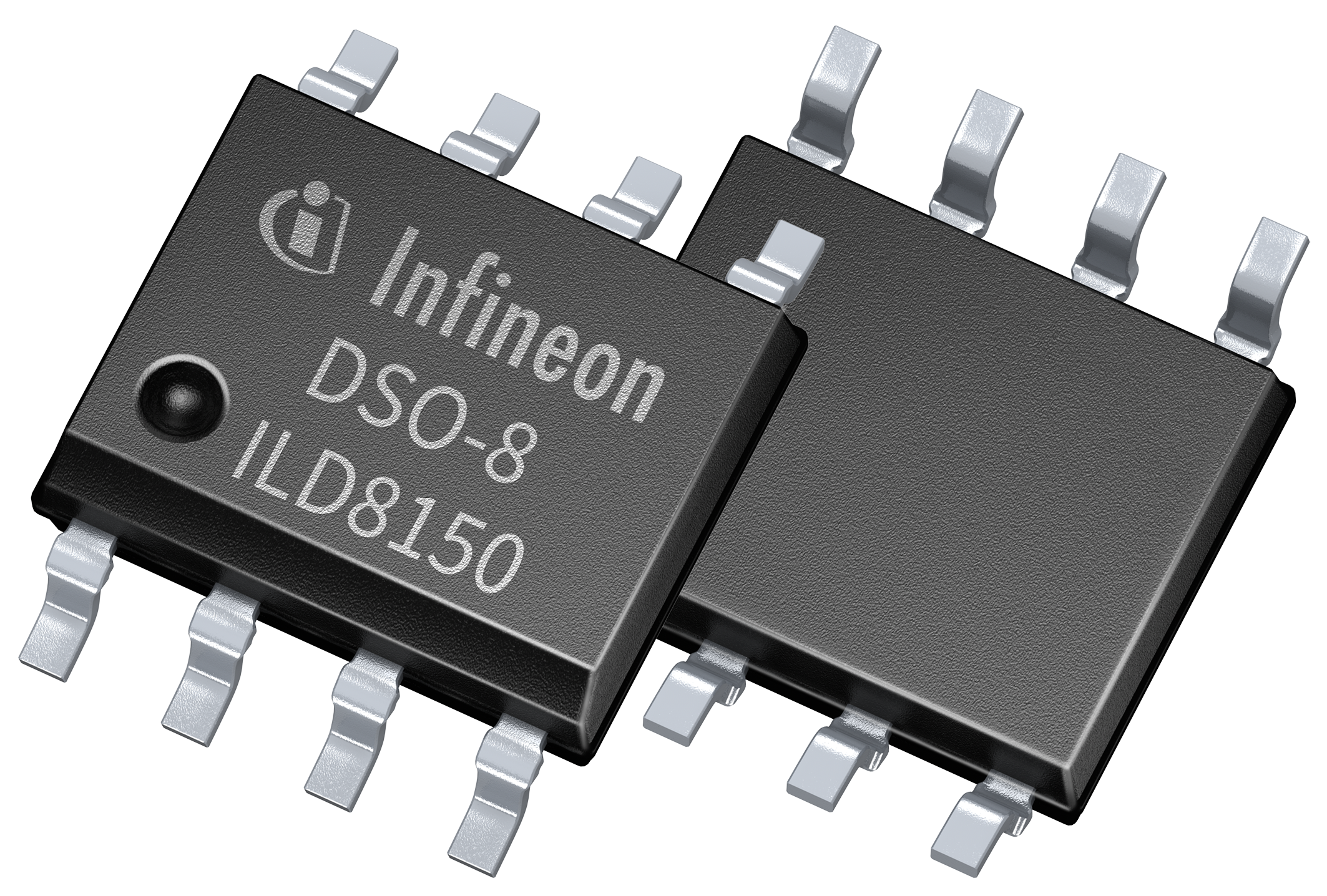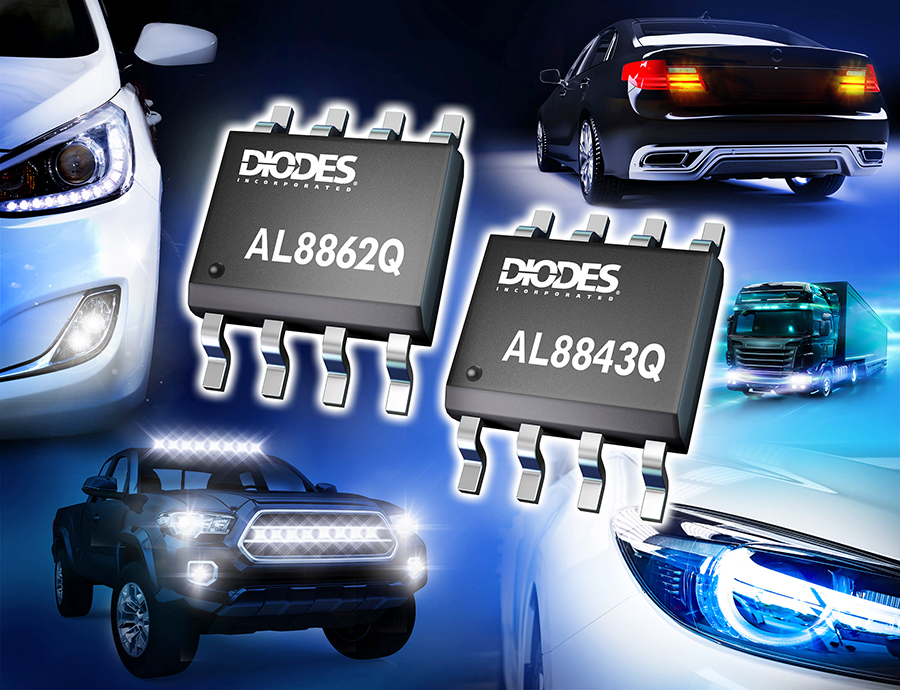By Gina Roos, editor-in-chief
Demand for LEDs continues to grow across industries — indoor/outdoor lighting, display sectors, and automotive lighting — thanks to their higher energy efficiency, lower heat output, and miniaturization, which is significantly boosting the LED driver market. LED drivers supply the constant electrical current at the right voltage so that LED lighting solutions operate efficiently. They also protect LEDs from any voltage or current fluctuations.
The rise of IoT connected lighting solutions and smart city initiatives to improve energy efficiency is also contributing to growth in the LED driver market. The sector is forecast to reach $11.3 billion by 2025, growing at a compound annual growth rate (CAGR) of 16.3% over the forecast period between 2019 and 2025, according to a report released by ReportBuyer.
One of the big trends in the market is the move to constant-current LED drivers, which are being used in high-brightness and outdoor lighting applications, the report found. Other trends include primary-side regulation (PSR), which eliminates secondary feedback circuitry, and power-factor-correction (PFC) circuitry for higher power quality. This is driven by shrinking system packages and lower cost requirements in the low- to mid-power range.
Many of the latest LED drivers introduced in the market over the past year have focused on smart lighting and automotive lighting applications. Here’s a snapshot of some of those products that address these key trends.
Smart lighting
Thanks to their energy efficiency, reliability, and longer life, LEDs are finding lots of homes in smart lighting and all kinds of indoor/outdoor lighting applications. For smart lighting solutions, size, weight, and cooling are big design challenges, resulting in new drivers that deliver higher efficiency.
One example is Power Integrations’ LYTSwitch-6 family of safety-isolated LED driver ICs with new high-power-density devices for smart-lighting applications. The new LED drivers with PowiGaN technology enable designs that deliver up to 110 W with 94% conversion efficiency using a flyback topology. The drivers also use lossless current sensing, which contributes to the higher efficiency.

(Image: Power Integrations)
The high efficiency of the LYTSwitch-6 ICs eliminates the need for heat sinks, which reduces ballast size, weight, and cooling airflow requirements. This makes them suitable for smart residential and commercial fixtures and low-profile ceiling troffers.
The 750-V PowiGaN primary switches provide very low RDS(ON) and reduced switching losses. This improvement, combined with existing LYTSwitch-6 features, increases power conversion efficiency by up to 3% compared to conventional solutions, said Power Integrations, which reduces wasted heat by more than one-third.
Existing benefits include fast transient response, delivering excellent cross-regulation for parallel LED strings without additional regulator hardware, and flicker-free system operation. This simplifies the pulse-width–modulation (PWM) dimming interface. A reference design (DER-801) describing a 100-W three-way dimming LED ballast is available.
STMicroelectronics offers a distortion-cancelling high-voltage LED driver that is said to future-proof energy-saving lighting and enable solid-state luminaires to comply with increasingly stringent lighting regulations. The HVLED007 AC/DC LED driver features a distortion-cancelling input-current–shaping (ICS) circuit that ensures a sinusoidal input waveform with very low total harmonic distortion (THD) over the full load and input-voltage range. THD is below 5% at full load.
With near-unity power-factor capability and maximum energy efficiency at over 90%, the HVLED007 enables a single control IC to address multiple medium- and high-power LED-lighting applications up to 80 W.

(Image: STMicroelectronics)
This current-mode PFC controller, optimized for use with isolated, high-power-factor, quasi-resonant flyback converters, can be used in smart industry, smart city, and smart home lighting applications. The electrical parameters are specified down to –40°C, allowing use in outdoor lighting including street lighting as well as indoor applications.
The totem-pole output stage can source and sink 600 mA and 800 mA, respectively, enabling use in EN61000-3-2–compliant switch-mode power supplies up to 100 W in addition to lighting applications.
The HVLED007 has built-in protection features, including short-circuit, overload, and overvoltage protection. The device is housed in an industry-standard SO8 small-outline package.
Dimming is an important feature for general lighting applications. Infineon Technologies AG’s 80-V ILD8150/E DC/DC buck LEDs address this requirement with a hybrid-dimming-mode technology for achieving 0.5% of the target current.
The driver ICs provide a high safety voltage margin for applications operating close to safe extra-low voltage (SELV) limits with a supply voltage range from 8 VDC up to 80 VDC. The driver targets general and professional LED lighting applications with high dimming requirements.
The ILD8150/E offers a deep dimming performance without flicker while preventing audible noise. A PWM input signal between 250 Hz and 20 kHz controls the LED current in analog dimming output mode from 100% to 12.5% and from 12.5% to 0.5% in hybrid-dimming mode, with a flicker-free modulation frequency of 3.4 kHz.

(Image: Infineon Technologies)
The digital PWM dimming detection with high resolution and the low-power shutdown match the ILD8150/E to microcontrollers. The device also has a dim-to-off function and a pull-down transistor to avoid LED glowing in dim-to-off mode.
The ILD8150/E drives up to 1.5 A using a high-side integrated switch. The ILD8150 driver with a low RDS(on) of 290 mΩ enables high-power designs with an efficiency of more than 95%. It incorporates a soft-start function to protect the primary stage from abrupt current requests and a shunt resistor for adjustable maximum output current.
The device offers precise output current accuracy of typical 3% from one device to another under all load and input voltage conditions. This makes the device well suited for tunable white and flat panel designs in which current must be identical. Other features include undervoltage lockout (UVLO) for the bootstrap voltage and overtemperature protection.
Automotive LED drivers
Automotive designers have also been moving to LEDs as replacements for traditional halogen and high-intensity discharge (HID/Xenon) lighting in exterior lighting applications. Many of the newest LED drivers are addressing the automotive lighting market with a variety of voltages and power topologies.
Industry players like ON Semiconductor say that designers are facing new challenges as the automotive industry transitions to all-LED lighting. These include improving efficiency, simplifying design, and reducing costs while meeting electromagnetic interference (EMI) requirements.
ON Semiconductor has introduced a new family of LED drivers and controllers for greater functionality in low-power solid-state lighting. The family is comprised of two LED drivers (NCV7683 and NCV7685) and two current controllers (NCV7691 and NCV7692) that were developed to simplify the design of advanced vehicle lighting.
For improved road safety, automakers are moving away from the simple “on/off” operation to sophisticated systems that incorporate movement and variable intensity in rear combination lamps (RCLs), turn signals, fog lamps, and other externally modulated LED clusters to provide highly visible warnings to other road users, said ON Semiconductor.
![]()
(Image: ON Semiconductor)
The NCV7685 and NCV7683 integrate 12 and eight linear programmable current sources, respectively, enabling multiple strings of LEDs to be driven with up to 100 mA per channel. A variety of configurability options are available, including daisy-chaining, illumination level control, current regulation, sequencing functionality, and channel combination.
The NCV7685 incorporates an 8-bit I2 C interface with CRC8 error detection for individual output current adjustment via PWM, and for advanced diagnostics — including detection of an open LED string or undervoltage condition — a dedicated diagnostic pin is also available. The NCV7685 may be powered with a DC/DC controller and/or LDO voltage regulator, depending on design requirements.
The NCV7691 provides a regulated wide current range for driving LEDs in one or multiple strings, with only an external NPN bipolar transistor and a feedback resistor. The driver allows the addition of single channels to multi-channel systems and supports a dimming function via its PWM input. For safe operation, the NCV7691 includes open-string, short-circuit, and thermal-shutdown functionality. The derivative NCV7692 offers a faster response time and a reduced threshold for open-load detection.
Diodes Inc. has launched its AL8843Q and AL8862Q automotive-compliant DC/DC buck converters that are designed for driving single LEDs and multiple LED strings for interior and exterior LED lamps. Applications include daytime running lights (DRLs), fog lights, turn lights, and brake/stop lights.
The AL8843Q, with a supply voltage from 4.5 V to 40 V, and the AL8862Q buck converters, with a supply voltage from 5 V to 55 V, can withstand severe voltage variations, such as load dumps during low cranking or stop-start operation, without suffering any degradation in the LED drive current, according to the company.

(Image: Diodes Inc.)
These automotive buck LED drivers support full-scale (0% to 100%) PWM dimming, controlled with either an analog input between 0.4 V and 2.5 V or a PWM signal generated by an external microcontroller or host processor. Both parts feature an integrated power MOSFET: 40 V/0.2 Ω for the AL8843Q and 55 V/0.4 Ω for the AL8862Q. They also feature hysteretic-mode buck LED driver control, which simplifies the feedback loop, enabling engineers to realize highly stable buck converter designs using only four external components.
Safety features include overtemperature protection as well as LED short- and open-circuit protection. The AL8862Q also incorporates an open-drain fault-indication pin.
The AL8843Q and AL8862Q in SO-8EP packages are qualified to AEC-Q100 Grade 1, support PPAP documents, and are manufactured in IATF16949-certified facilities.
Also targeting the need for simpler designs in automotive lighting, the MAX25610A and MAX25610B LED drivers for high-brightness LEDs (HBLEDs) from Maxim Integrated Products, Inc. deliver 90% efficiency and pass CISPR 25 EMI specifications.
The synchronous buck, buck-boost LED drivers/DC-DC converters offer a complete solution that features high EMI performance without impacting efficiency and size. These ICs drive up to eight HBLEDs directly from the automotive battery. Saving on bill of materials (BOM) costs and space, they integrate many external components. These features make them suitable for automotive lighting systems as well as industrial and commercial lighting applications.
The MAX25610A/B LED drivers with integrated MOSFETS address size, efficiency, and EMI performance in a single package. They also enable configurations in buck, buck-boost, and boost modes to support a variety of LEDs and topologies in exterior and front lighting. They also meet a wide range of voltage requirements with a wide input voltage range from 5 V to 36 V in buck-boost LED driver applications with up to 90% efficiency.
The LED drivers, in a 5 × 5-mm TQFN package, have an internal current-sense option and integrated high- and low-side switching MOSFETs to reduce solution space and cost. They offer programmable on-chip PWM dimming, which allows for fine dimming control without having to use a separate microcontroller. The MAX25610B features a 2.2-MHz switching frequency option for a more compact solution.
Rohm also released a family of LED drivers that reduces board area along with design load in automotive LED lamps — including LED rear lamps (turn/stop), fog lamps, and turn signals — and is particularly well suited for two-wheel rear lamp applications.
The four-channel linear LED driver ICs with built-in MOSFETs address the demand for simpler circuit configurations and thermal issues with two new technologies. The BD183x7EFV-M (BD18337EFV-M/BD18347EFV-M) series incorporates a proprietary thermal dissipation circuit and individual LED control functionality, specifically developed to significantly reduce board area along with application design load for LED lamps.
The heat dissipation circuit consolidates the multiple heat dissipation terminals for conventional output channels into a single terminal, allowing Rohm to configure a four-channel, high-output (150 mA/channel) driver in a compact 16-pin package. To reduce design load, the heat dissipation circuit — by consolidating the multiple terminal circuits into one — allows thermal design typically required for each channel to be completed in a single step, said Rohm
The individual LED control function makes it possible to simultaneously drive two vehicle LED lamps that have different specifications with a single driver instead of two drivers traditionally required. The built-in control function also allows designers to select LED operation during abnormalities to either turn all of the lamps off or only the failed string. This allows compliance with multi-regional laws with a single setting, said Rohm.
Other key features include individual dimming functionality that supports sequential lighting for greater design flexibility and multiple protection functions to protect the LED driver and peripheral circuits.
For advanced automotive rear combination lamps and interior lighting, STMicroelectronics offers a 12-channel LED driver. The ALED1262ZT features independent 7-bit PWM dimming on all channels, providing flexible control of tail, stop, and indicator lights, with dynamic effects. The input-voltage range from 5.5 V to 38 V allows the driver to be used in direct battery-connected systems.
Each channel delivers constant output current at 19 V for controlling multi-LED series strings. Adjustments can be made from 6 mA to 60 mA to ensure a wide dimming range with high maximum brightness.
The LED lighting driver supports I2 C commands from a host microcontroller and provides two pre-programmed configurations that allow standalone operation for extra flexibility. It also offers stability and reliability thanks to diagnostic features, including open-LED detection and overtemperature warning with thermal shutdown.
The ALED1262ZT is designed for low-noise operation, with slow turn-on/-off time per channel and spread-spectrum clock operation to simplify integration with other in-vehicle electronics. The driver is housed in a 6.4 × 7.8-mm thermally efficient HTSSOP24 exposed-pad package. An evaluation board is available.
Advertisement
Learn more about Electronic Products MagazineMaxim Integrated





